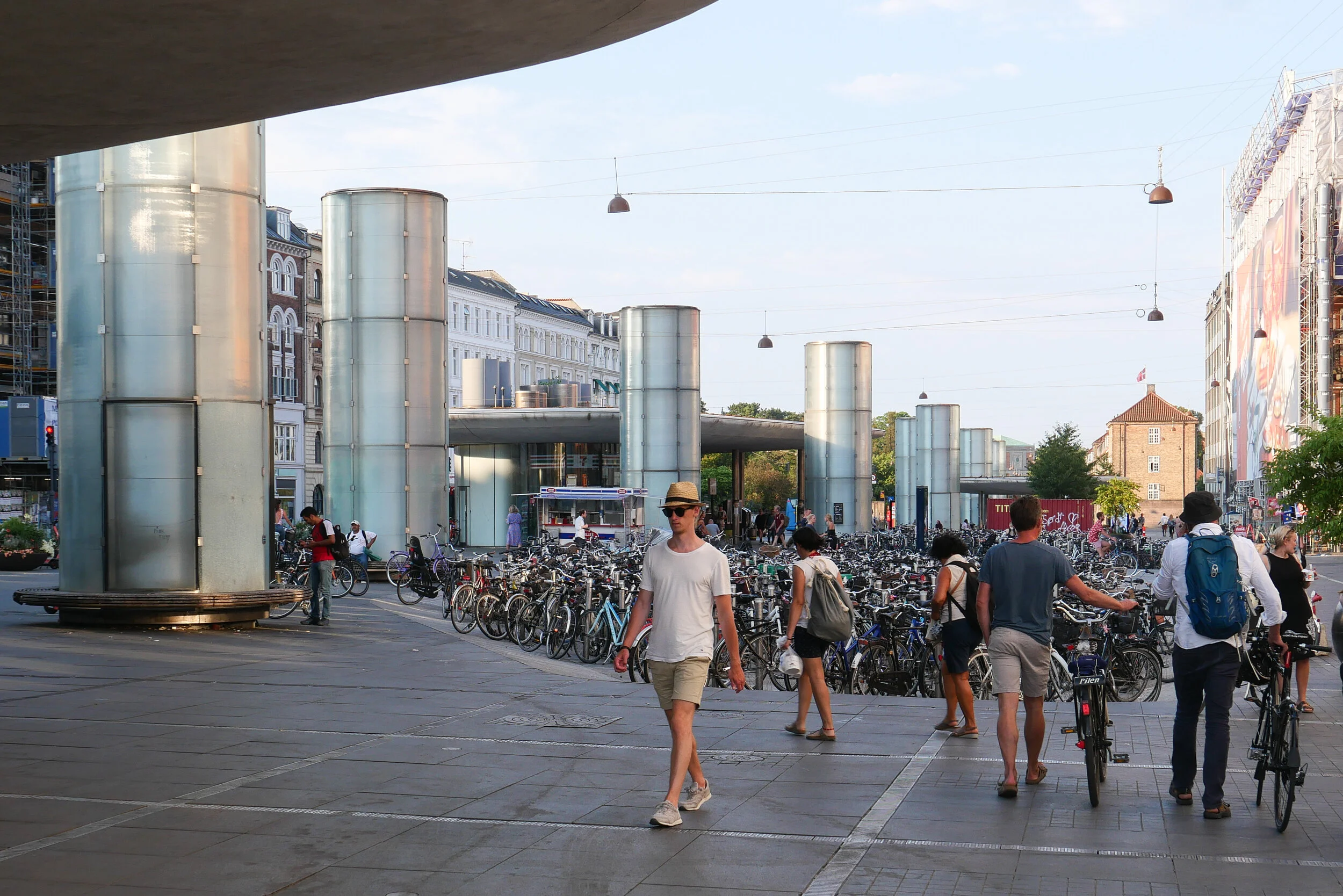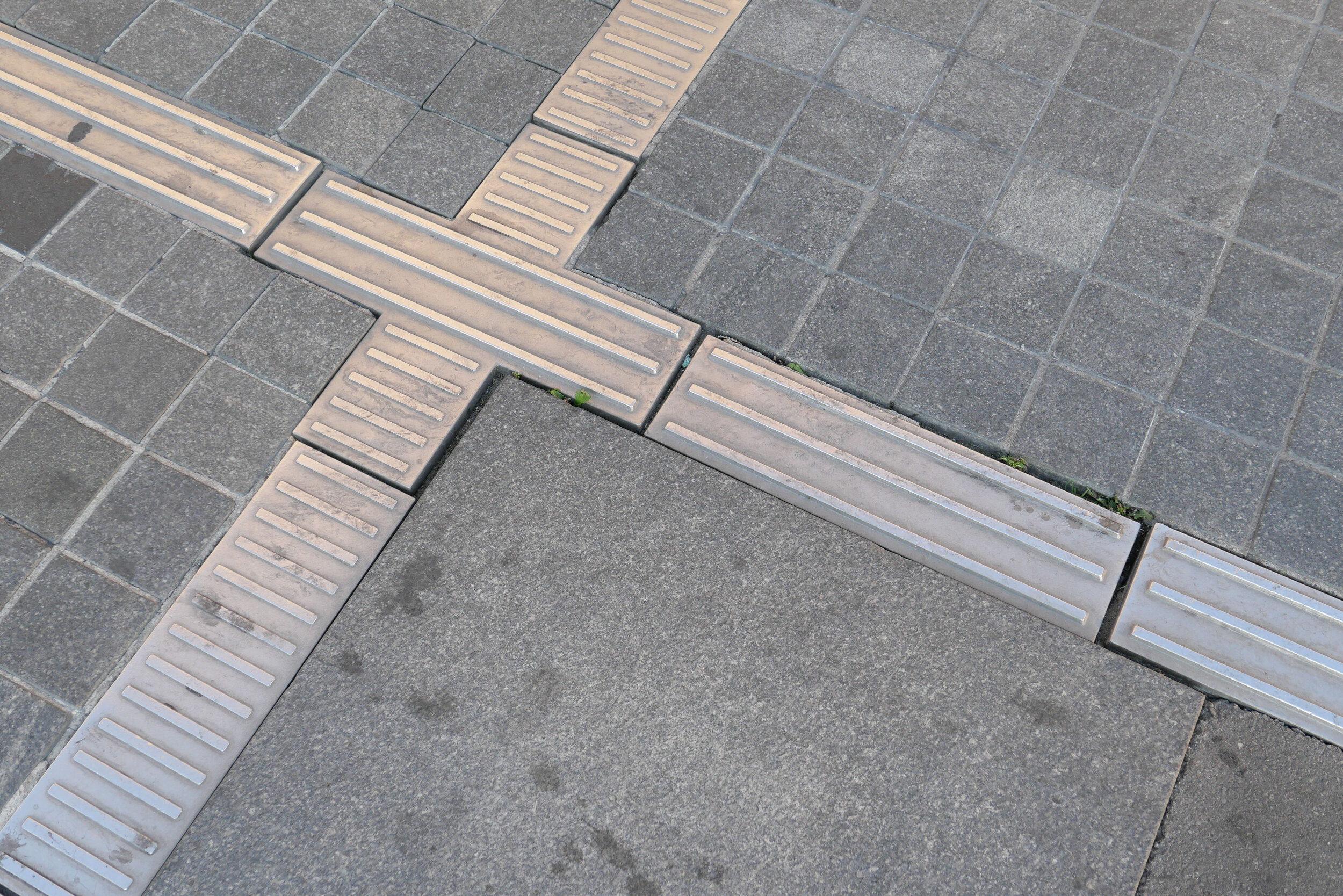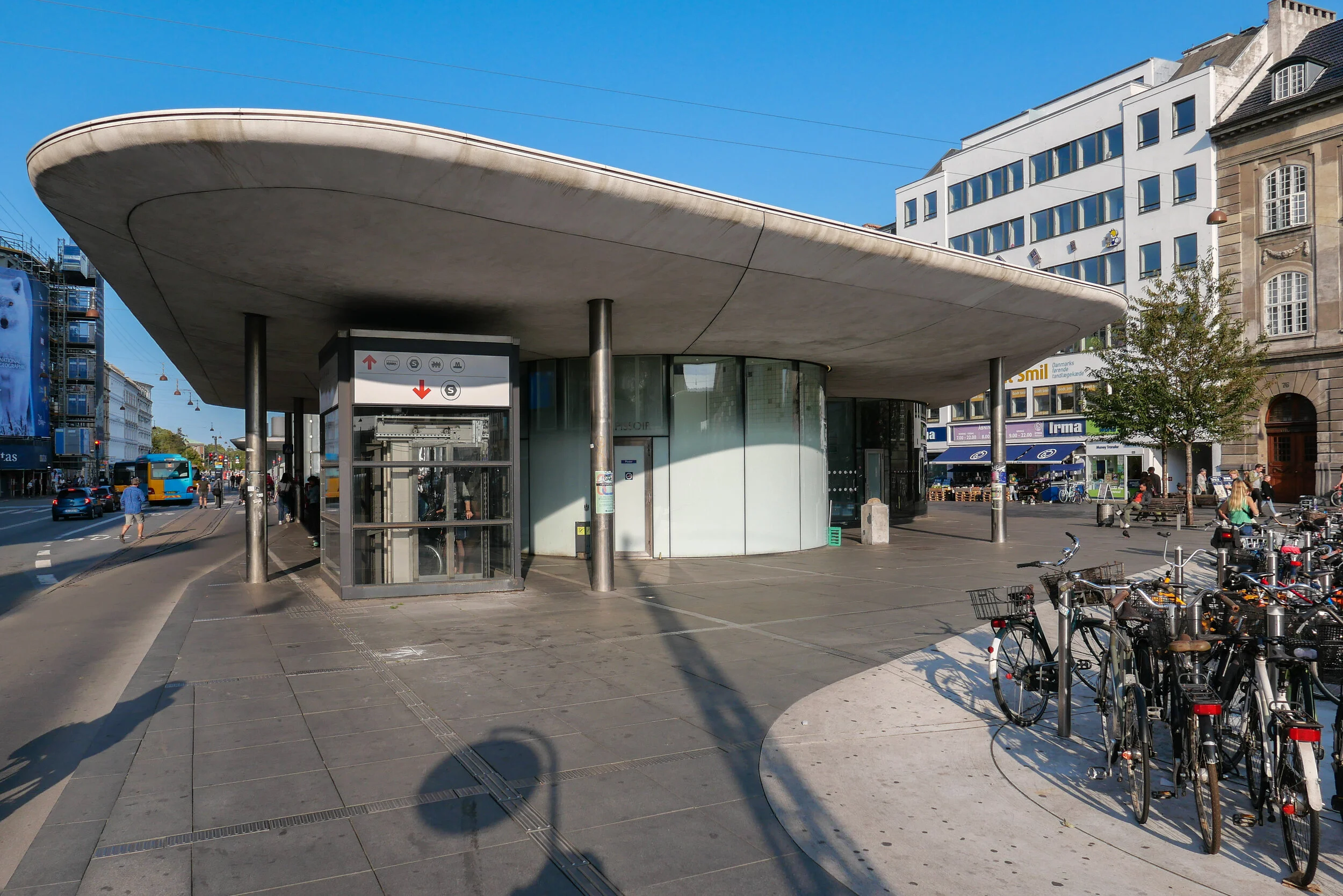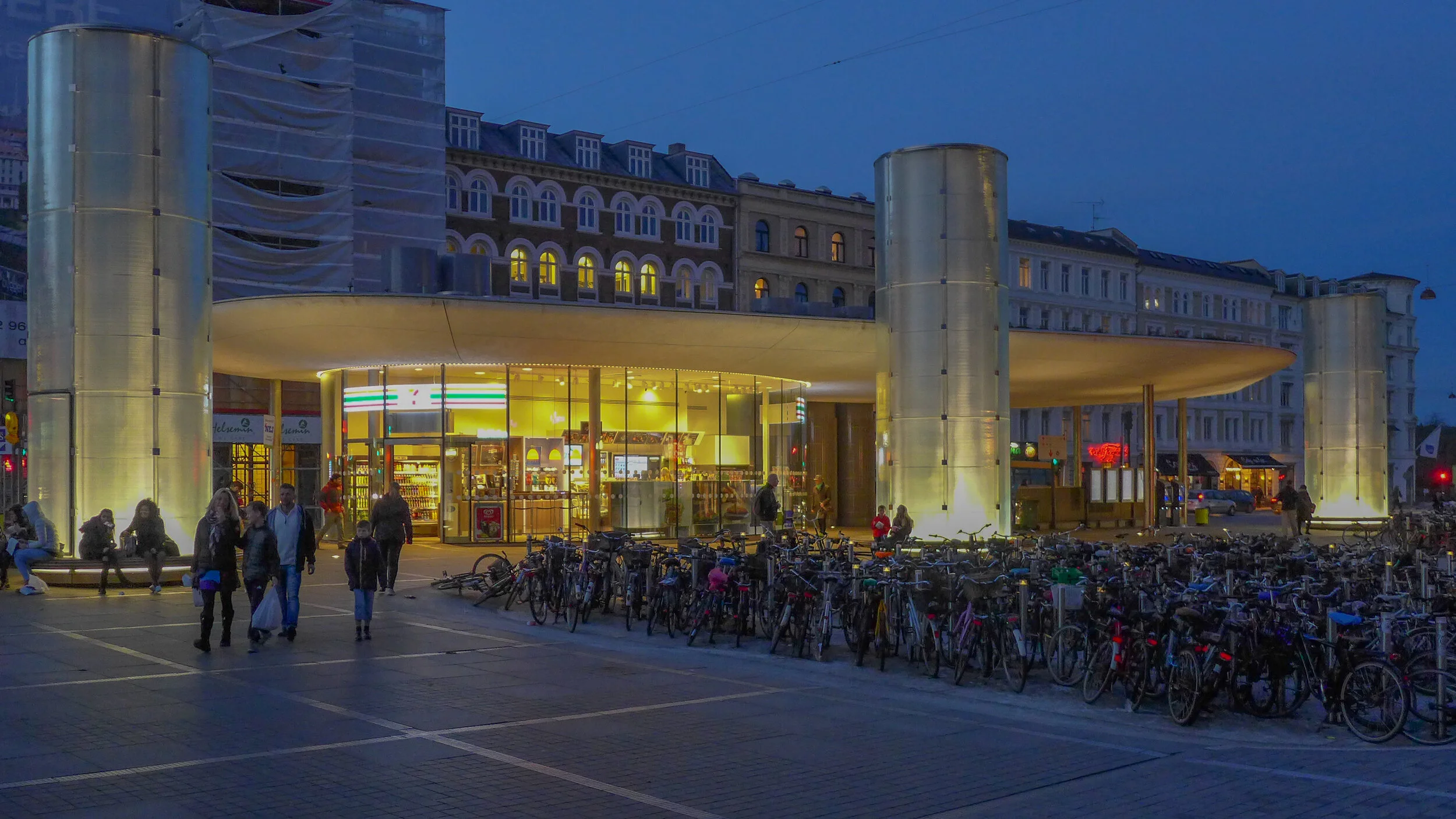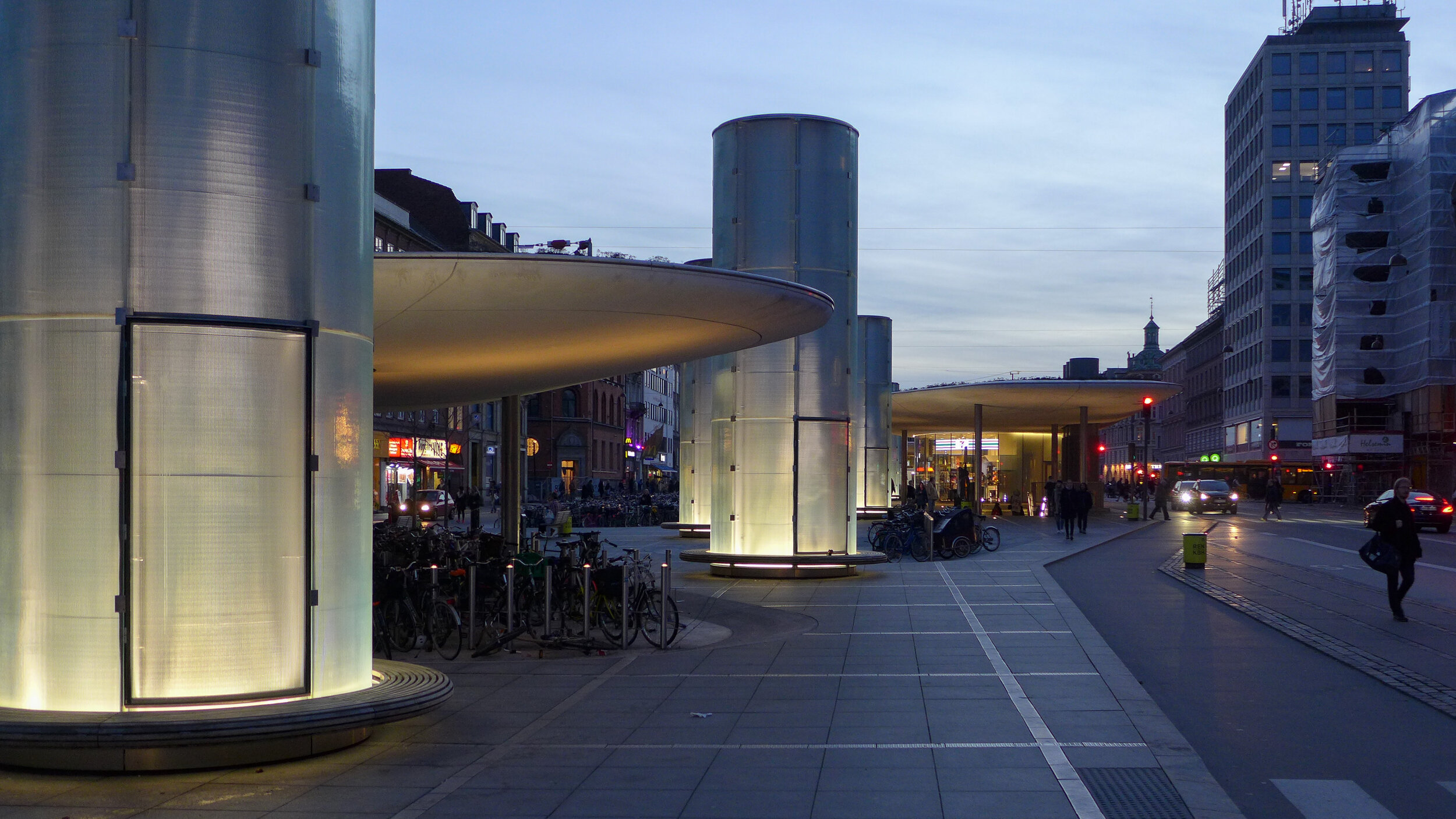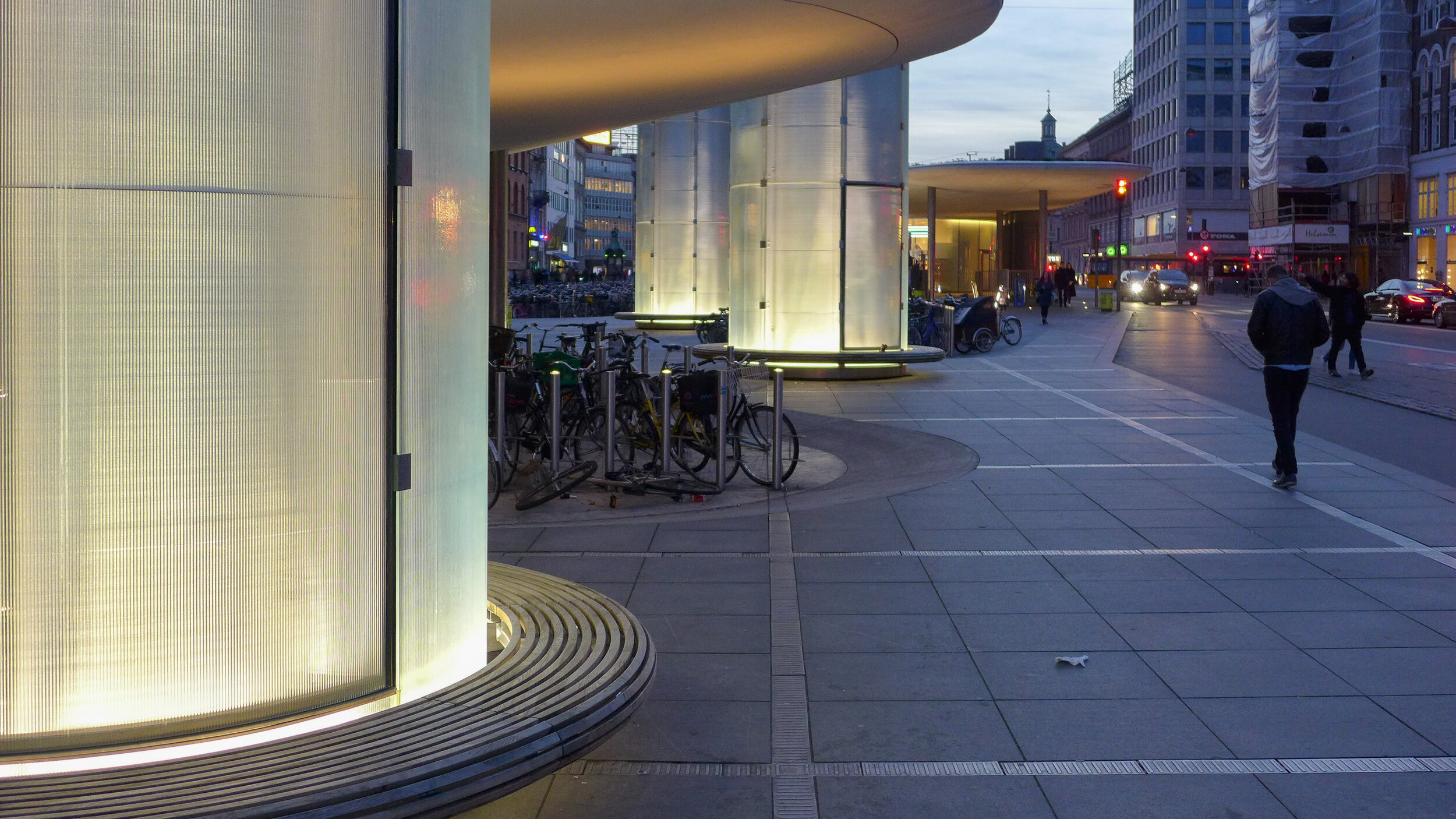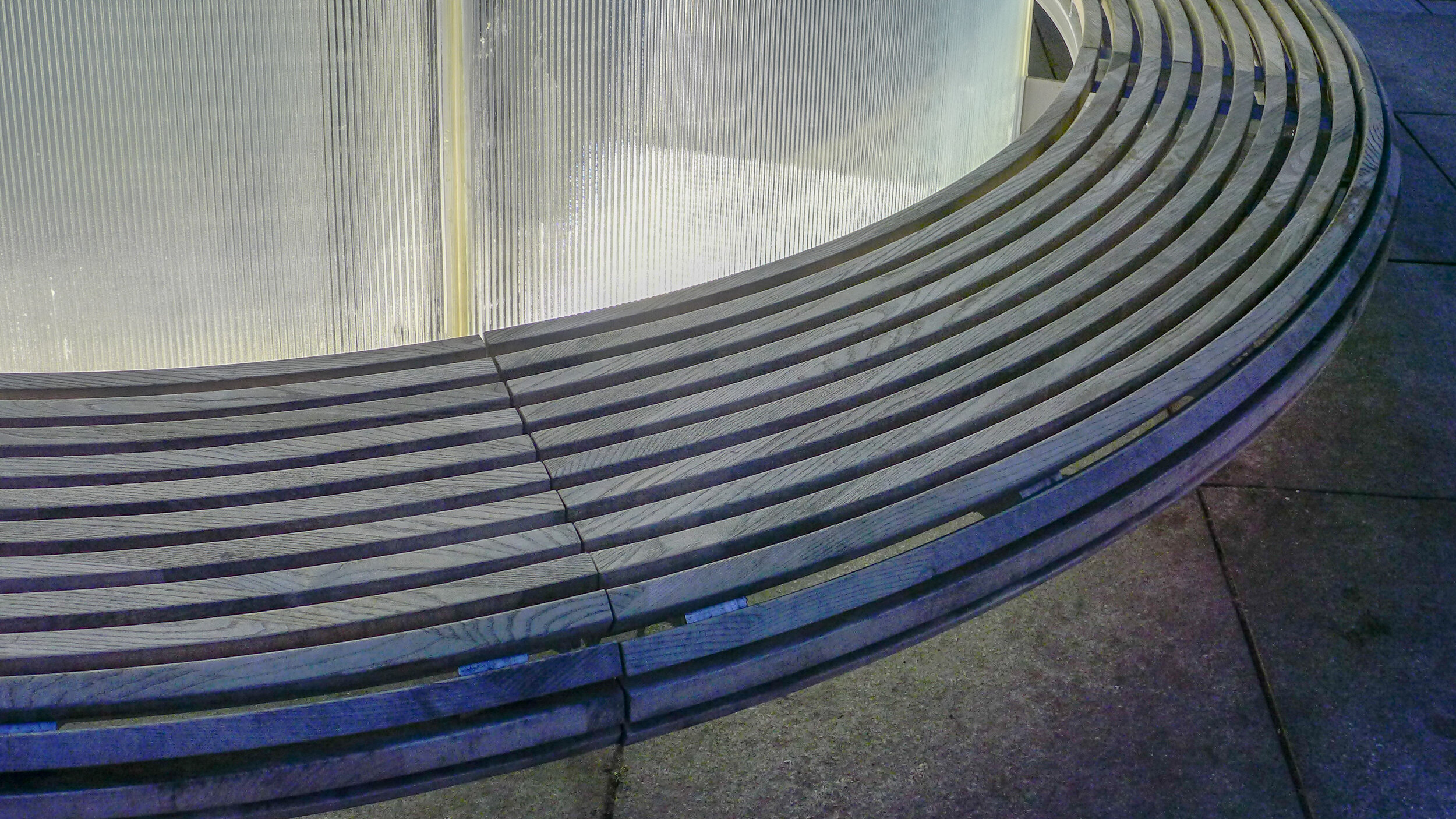recent criticism of Nørreport
/Recently, there was an article in Politiken, the Danish daily newspaper, that criticised the square above Nørreport station because it’s looking tired and slightly scruffy.
In part, of course, the remodelling of the area completed five years ago has been a victim of it’s own success.
When COBE, the architects responsible for the remodelling, took on the commission, their first task was to look at how people moved across the space when the station entrances were on an island with traffic moving along both long sides of the space so, wherever you were coming from or going to, you had to cross a road to get to steps down to the trains that at this station are below pavement level. By closing and paving over the road on the city side and by pushing all through traffic, including buses, to the long west side, then, in effect, the problem was halved.
This is still the busiest transport interchange in the city and, for that reason alone, it can not be a place where people can or should be encouraged to stay so it can’t really be too inviting. There are seats and people seem happy to stand around waiting if they have arranged to meet someone but that it is about it. It is and has to be a transit space.
The article criticised the sunken areas where bikes are left but actually they work remarkably well given the phenomenal number of bikes left here. Generally, few bike spill out over the paving where pedestrians walk and very few pedestrians find it clever or necessary to cut between the parked bikes and when I checked, over a couple of different days, they were not full of litter as suggested.
Paving and metal drainage and service covers that divide the huge area into an overall chequer or square pattern are certainly looking worn and dirty and cracked. In part this is because heavy vehicles sometimes need access and can cause damage but possibly the main problem with the paving is the colour and the lack of texture. As with the paving on Købmagergade - the long pedestrian street that starts at Nørreport and runs down to Strøget - the Walking Street - the paving is too pale and too smooth. Areas of older stone setts in the historic centre tend to have much darker greys and even some purple tones and that seems to provide a better visual base for the buildings and, in a practical way, show dirt and stains less although nothing can disguise the blobs of chewing gum. A bin it and don’t spit it or flick it campaign is desperately needed.
Nørreport does work well at night with soft light from the ventilation towers that makes it feel safe but the light is not so bright that you feel as if you are moving around under the glare of security spot lights.
Maybe some areas of paving can be improved and possibly some new trees at the north end might help to screen off Gothersgade and give a sense of enclosure but more general planting is not necessary …. it has to be understood that this area should not be treated as if it was an enclosed space like a square because it is simply the centre section of a long but wide road.
It’s good to have at least some urban areas in the city that are designed to be busy and bustling spaces.


